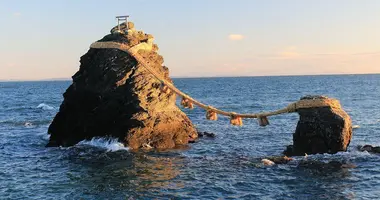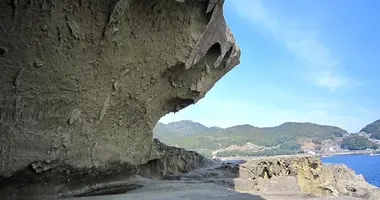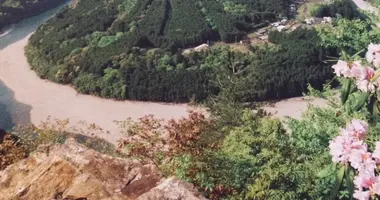Kii Peninsula: exploring Japan's sacred and natural wonderland
- Published on : 24/05/2024
- by : Japan Experience
- Youtube
Nestled in the heart of Japan's Kansai region, the Kii Peninsula stands as a testament to the country's rich spiritual heritage and natural beauty. This expansive landmass, the largest peninsula on Honshu island, encompasses parts of Wakayama, Nara, and Mie prefectures. For over a millennium, the Kii Peninsula has been revered as a sacred dwelling place of the gods, attracting pilgrims, nature enthusiasts, and curious travelers alike. With its dense forests, rugged mountains, and pristine coastlines, the peninsula offers a unique blend of spiritual significance and breathtaking landscapes. From ancient pilgrimage routes to world-renowned shrines and temples, the Kii Peninsula invites visitors to embark on a journey through Japan's cultural and natural wonders.
Overview of the Kii Peninsula: geography, climate, and cultural significance
The Kii Peninsula juts southwards into the Pacific Ocean, with the Inland Sea to its west. Its geography is characterized by steep mountains, deep valleys, and a rugged coastline. The Kii Range forms the backbone of the peninsula, with notable peaks such as Mount Ōdaigahara (5,561 feet) and Mount Hakken (6,283 feet)dominating the landscape. This mountainous terrain has played a crucial role in shaping the region's climate, culture, and spiritual practices.
Climatically, the Kii Peninsula is known for its high rainfall, making it one of the wettest areas in Japan. The region experiences a temperate climate with subtropical influences, particularly along the coast. This unique weather pattern has contributed to the lush vegetation and diverse ecosystems found throughout the peninsula.
Culturally, the Kii Peninsula holds immense significance in Japanese history and spirituality. It has been a center of religious activity for both Shinto and Buddhist traditions for over a thousand years. The peninsula is home to some of Japan's most important spiritual sites, including the Kumano Sanzan (Three Grand Shrines of Kumano), Mount Koya, and Ise & Toba. These sacred places have attracted pilgrims from all walks of life, including emperors and commoners alike, shaping the region's cultural landscape over centuries.
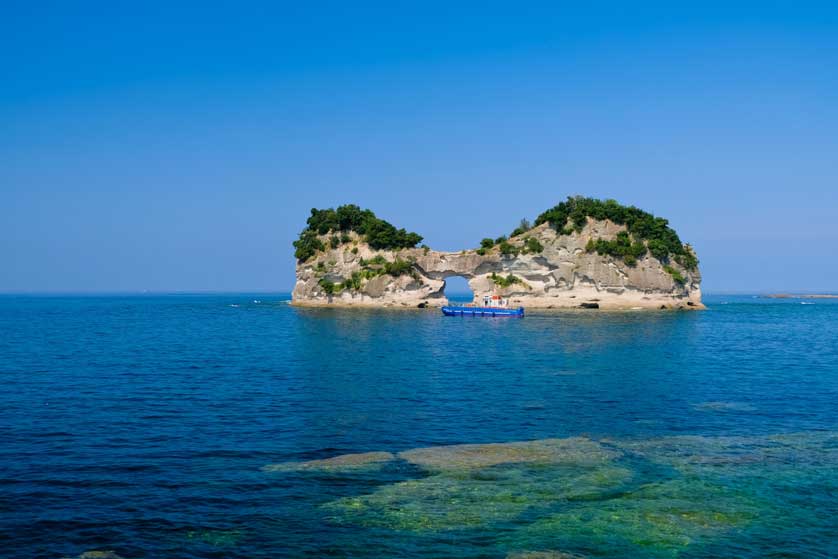
Engetsu Island, Kii Peninsula
UNESCO World Heritage Sites: Sacred Sites and Pilgrimage Routes in the Kii Mountain Range
The Kii Peninsula's spiritual and cultural importance is recognized globally through its UNESCO World Heritage designation. The "Sacred Sites and Pilgrimage Routes in the Kii Mountain Range" were inscribed on the World Heritage List in 2004, acknowledging the exceptional fusion of Shintoism and Buddhism in this unique cultural landscape.
This UNESCO site encompasses three main areas:
- Yoshino and Omine: Known for its stunning cherry blossom displays and as a center for Shugendo mountain worship.
- Kumano Sanzan: The three grand shrines of Kumano Hongu Taisha, Kumano Hayatama Taisha, and Kumano Nachi Taisha.
- Mount Koya: The headquarters of Shingon Buddhism, founded by the monk Kukai in the 9th century.
Connecting these sacred sites are the Kumano Kodo pilgrimage routes, a network of ancient trails that have been used by pilgrims for over a millennium. These paths, winding through dense forests and rugged terrain, offer modern travelers a chance to follow in the footsteps of countless pilgrims throughout history. The most popular route, the Nakahechi, stretches from Tanabe to the Kumano Sanzan shrines, providing a challenging yet rewarding journey through the heart of the Kii Peninsula.
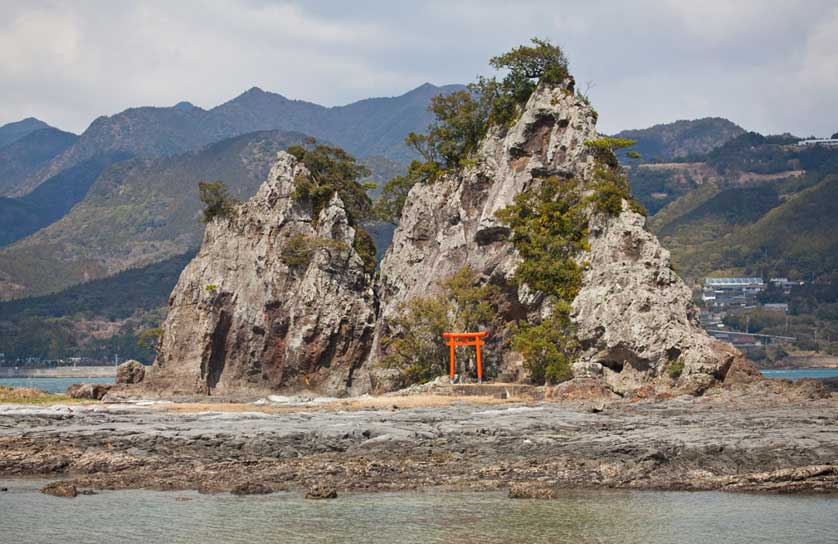
A vermillion torii gate at the foot of a picturesque crag on the Kumano Kodo trail in the Kii Peninsula
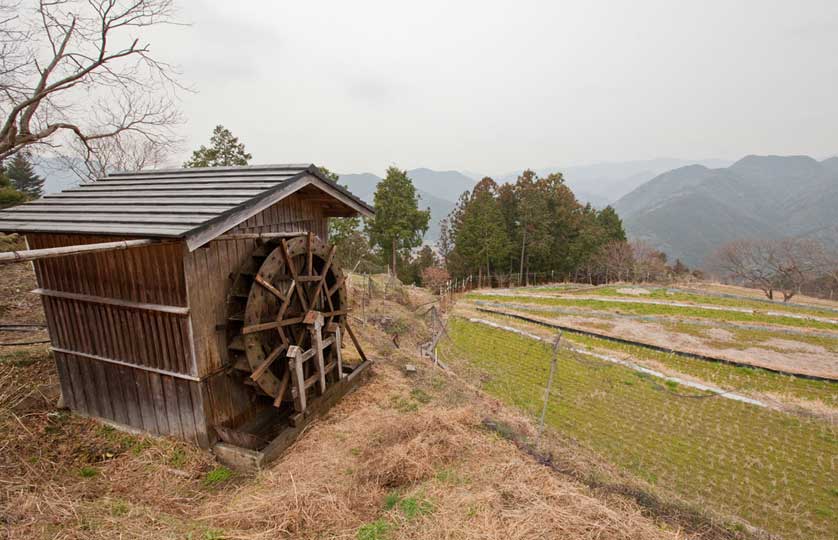
Forested hills and paddy fields along the Kumano Kodo ancient pilgrimage route, Kii Peninsula
Natural wonders and spiritual landmarks of the Kii Peninsula
The Kii Peninsula boasts an array of natural and spiritual wonders that captivate visitors with their beauty and significance. Some of the most notable attractions include:
- Nachi Waterfall: Japan's tallest single-drop waterfall at 133 meters, it's considered a sacred site and is adjacent to Kumano Nachi Taisha shrine.
- Yoshino-Kumano National Park: Encompassing much of the peninsula's interior, this park showcases the region's diverse flora and fauna.
- Ise-Shima National Park: Located on the eastern coast, this park combines scenic coastal views with important cultural sites.
- Kumano Hongu Taisha: One of the three grand shrines of Kumano, featuring the world's largest torii gate at its former site, Oyunohara.
- Koyasan: A mountaintop Buddhist complex with over 100 temples, including Kongobuji Temple and the atmospheric Okunoin cemetery.
These landmarks not only showcase the natural beauty of the Kii Peninsula but also serve as tangible links to Japan's spiritual and cultural heritage. Visitors can experience the unique blend of nature worship and Buddhist philosophy that has shaped this region for centuries.
Unique experiences and hidden gems
Beyond the well-known attractions, the Kii Peninsula offers a wealth of unique experiences and hidden gems for the intrepid traveler:
- Shugendo experiences: Participate in ascetic practices led by yamabushi mountain monks on Mount Omine.
- Ama divers in Toba: Witness the traditional female pearl divers in action and learn about their centuries-old profession.
- Ninja experiences in Iga-Ueno: Explore the birthplace of the Iga ninja school and try your hand at ninja techniques.
- Kumano Kodo Oji shrines: Discover the smaller shrines along the pilgrimage routes, each with its own unique history and legends.
- Hashigui-iwa: Marvel at the natural rock formation along the coast near Kushimoto, resembling the pillars of a giant bridge.
These experiences offer visitors a chance to delve deeper into the cultural fabric of the Kii Peninsula, providing insights into local traditions, folklore, and ways of life that have persisted for generations.
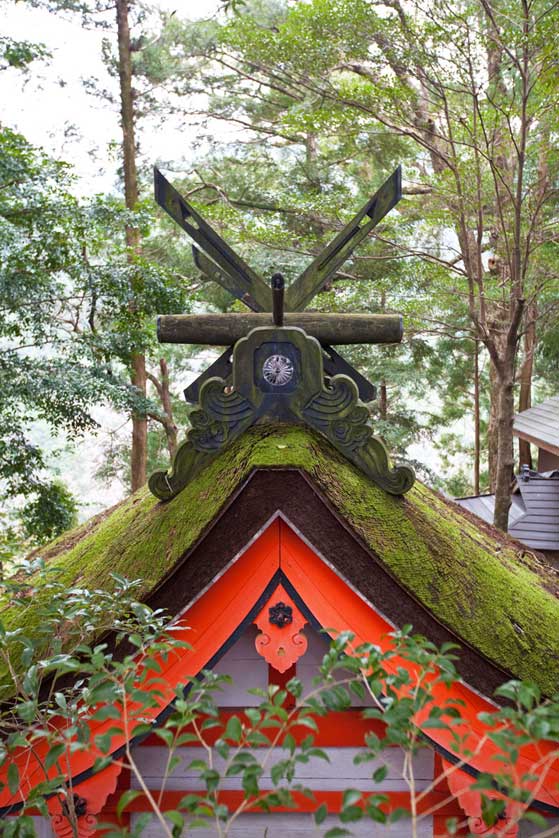
A moss-covered forest shrine in Kumano Kodo
Onsen towns and hot spring culture
The Kii Peninsula is renowned for its abundance of natural hot springs, or onsen, which have been cherished for their healing properties for centuries. Several notable onsen towns dot the peninsula, offering visitors a chance to relax and rejuvenate:
- Shirahama Onsen: A popular resort town known for its white sand beach and open-air baths overlooking the Pacific Ocean.
- Yunomine Onsen: One of Japan's oldest hot spring towns, featuring the UNESCO World Heritage-listed Tsuboyu bath.
- Kawayu Onsen: Unique for its natural hot spring river, where visitors can dig their own bath in the riverbed.
- Katsuura Onsen: Offers a variety of baths, including some in caves with ocean views.
These onsen towns not only provide relaxation but also offer insights into Japanese bathing culture and traditions. Many ryokan (traditional inns) in these areas offer guests the opportunity to experience authentic Japanese hospitality and cuisine alongside their hot spring baths.

One of the many rustic onsen hot springs in Kumano Kodo in the Kii Peninsula in the Kansai region of central Japan
Culinary delights and local specialties
The Kii Peninsula's diverse geography and climate contribute to a rich culinary tradition. Some local specialties and dishes to try include:
- Kumano beef: High-quality wagyu beef raised in the Kumano region.
- Mehari-zushi: Rice balls wrapped in pickled takana leaves, a local specialty of Kumano.
- Matsusaka beef: Another premium wagyu variety, rivaling the more famous Kobe beef.
- Kii Peninsula mikan: Sweet, juicy oranges grown in the region's mild climate.
- Fresh seafood: Particularly tuna from Katsuura, one of Japan's largest tuna ports.
- Ise udon: Thick, chewy udon noodles served with a rich soy-based sauce.
For those seeking a more spiritual culinary experience, shojin ryori, the vegetarian cuisine of Buddhist monks, can be sampled at temples on Mount Koya. This carefully prepared, plant-based cuisine reflects the Buddhist principles of harmony with nature.
Transportation and practical tips for exploring the Kii Peninsula
Navigating the Kii Peninsula requires some planning, but the region is well-connected by public transportation. Here are some tips for getting around:
- By train: The JR Kisei Main Line runs along the coast, connecting major towns and cities. From Osaka, Kyoto, or Nagoya, take limited express trains to key stations like Kii-Tanabe or Shingu.
- By bus: Local buses connect train stations to more remote areas and trailheads. The Kumano Kotsu Bus Pass offers unlimited travel within the Kumano area.
- By air: Nanki-Shirahama Airport offers flights from Tokyo, providing quicker access to the southern part of the peninsula.
- Ferry services connect various coastal towns, offering scenic routes and access to smaller islands.
When planning your trip, consider the following tips:
- The best times to visit are spring (March to May) and autumn (September to November) for mild weather and beautiful foliage.
- Book accommodations in advance, especially during peak seasons and in popular onsen towns.
- Prepare for rain, as the region experiences high rainfall throughout the year.
- If hiking the Kumano Kodo, ensure you have appropriate gear and physical preparation.
- Consider staying at a temple lodging (shukubo) on Mount Koya for a unique spiritual experience.
The Kii Peninsula offers a journey through Japan's spiritual heart, natural beauty, and cultural heritage. Whether you're seeking spiritual enlightenment, natural wonders, or simply a deeper understanding of Japanese culture, this remarkable region provides an unforgettable experience that connects the past with the present. As you explore its sacred mountains, walk its ancient pilgrimage routes, and soak in its healing hot springs, you'll discover the enduring allure of the Kii Peninsula – a true gem in Japan's cultural landscape.
Kii Peninsula Attractions
Kii Peninsula Access
Kii Peninsula Video



